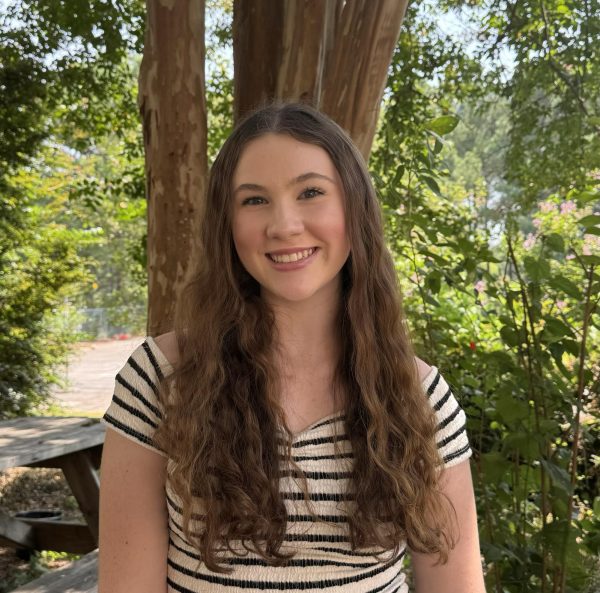Is AI taking over our artists?
AI is quickly taking over the art community. In fact, this graphic was made by an AI program.
AI, an acronym for artificial intelligence, is a growing threat to all artists everywhere. AI is a machine, built solely to use algorithms and data to recognize patterns and ultimately excel at tasks that would otherwise require human intelligence. They get things done cheaper and faster than a human ever could, causing humble artists to fear not only for the security of their jobs, but the longevity of their passion.
To emphasize the extent of AI’s reach, it’s important to consider a definition of “art”. What makes up an “artist?” The term is quite broad, and can expand into hundreds of hobbies and occupations. What all artists have in common, however, is a love for creativity and imagination. When you look at whatever you’d consider a “piece of art,” you can tell that there is a feeling behind it. However, with the rise of computer programming, this is no longer necessary. Efficiency-driven corporations may look for a reliable, consistent production of art, and in doing so, look past real people.
With AI-powered software, it’s possible for anyone to make high-quality art pieces with the click of a few buttons, which includes illustrations, photography, writing and more. This is an exciting advancement for individuals who’ve wanted to get into art but have struggled with their own hand.
A specific field of artistry that could possibly be severely impacted by the rise of AI, however, is photography. A recent example of the realism of artificial photos includes the work of German photographer Boris Eldagsen. The black and white photograph under her name, depicting two women of different generations, won a prestigious award that Eldagsen went on to reject. She admitted that she did not actually take the photo, and that it was rather crafted by artificial intelligence technology. This left an uncomfortable feeling in the viewers who confessed they had no suspicion that the photo was not taken by a human hand. If AI already passed this test, and undeniably will only improve with time, then what does that mean for the future of all photography? If even the most knowledgeable minds of photography cannot distinguish real from fake, how are we supposed to?
Painters fear that their work is being infringed upon just as much as photographers. A significant case was the lawsuit of painter Kelly McKernan, who startlingly found that their unique art style was being replicated by AI-powered technology. McKernan conveyed that they felt their livelihood was being violated, and that they could even see their own hand in the artificial paintings. Two other artists, namely Sarah Anderson and Karla Ortiz, joined McKernan in the class-action lawsuit against AI imagery generators for what they felt was a production of derivative work. This contentious situation pushed the idea that AI artwork is becoming too powerful for the comfort of hardworking artists.
Even writing, which seems to be a more forgotten form of artistry, is being impacted by generative tools. Writing is a broad field: novelists, poets, journalists, songwriters and playwrights alike can all feel the impending doom of our computer’s growing intelligence. Chat GPT, an insanely smart and quickly growing AI software is spreading like wildfire among writers of all ages. In fact, a survey distributed to professional writers in January revealed that 27 percent of professionals were using Chat GPT as an aid in all types of work. Specifically, it’s been found that Hollywood writers have been using platforms such as Chat GPT and DALL-E to save time typing up a script; this extends some anxieties about the future of Hollywood. AI can search through previous works and just as easily create a film as experienced professionals. It’s possible that with the increasing use of AI as an aid, the technology will grow strong enough to wipe out the profession as a whole.
The problem lies within the fact that AI is an aid, not a replacement. I don’t see the harm in using AI to help you in a tedious project or to bring to life a vision you’ve dreamed of being able to create yourself. But, AI cannot and will not ever be a valid replacement for human artists. With the growing powers that technology possesses, a multitude of jobs, not only in the art field, are forced to transform to acclimate to the existence of up-and-coming computer-powered coworkers. Though it’s unlikely that all of our jobs will be wiped out, eventually, the question will arise: how much of a help are humans?
However, even if our computers do succeed in taking over the livelihood of hardworking artists, there will always be a lacking existence of emotion. Real human emotions, experiences, memories, dreams and fears. The main goal of human art is to evoke a feeling in its viewers by telling a story. That’s something a string of zeros and ones can never achieve.








